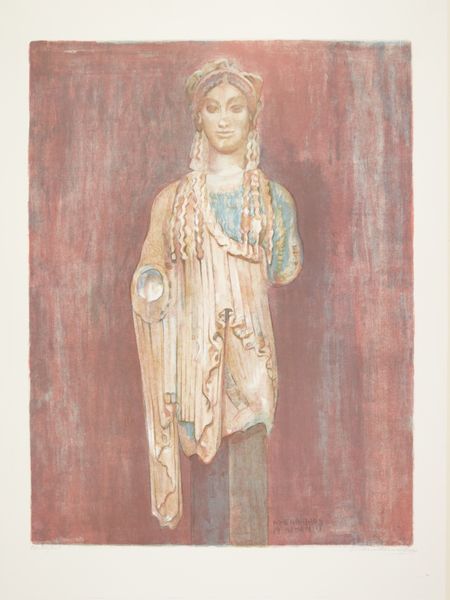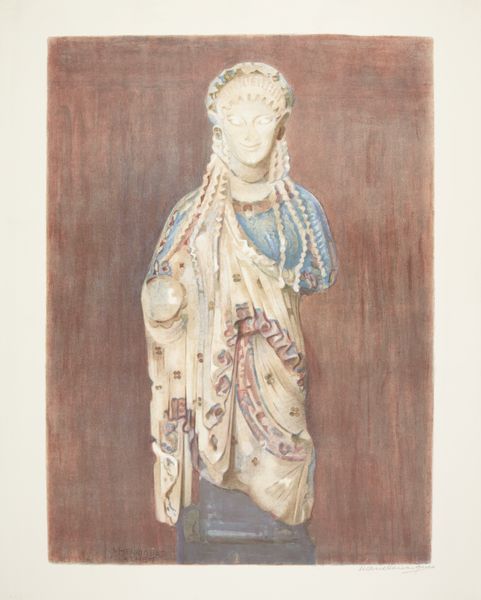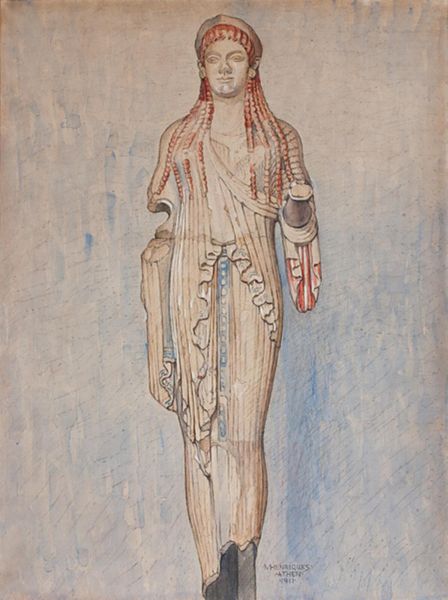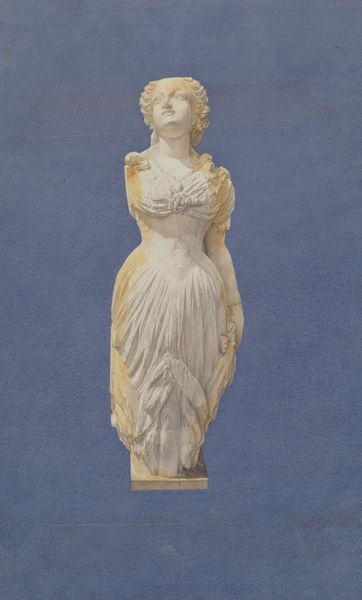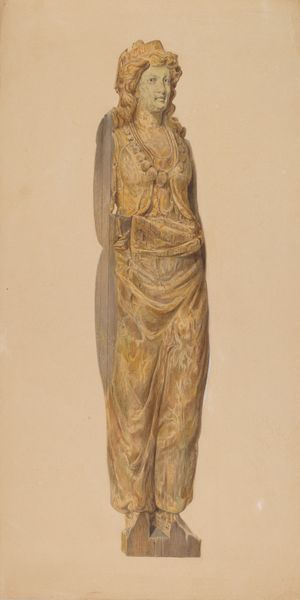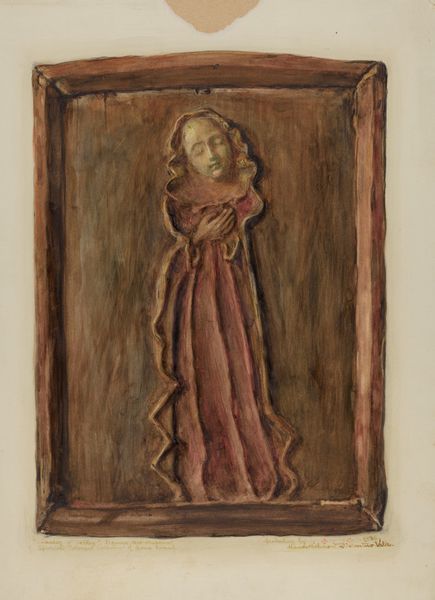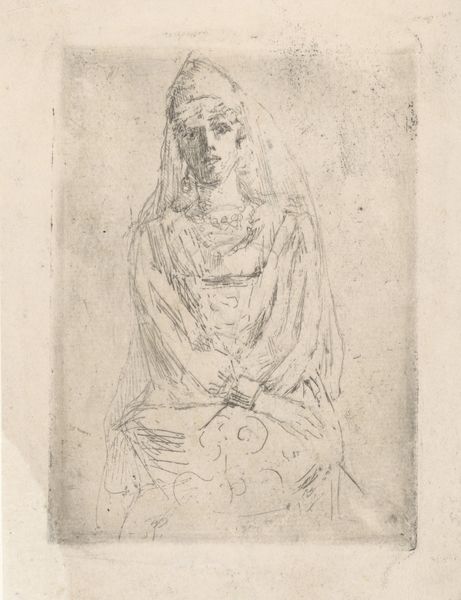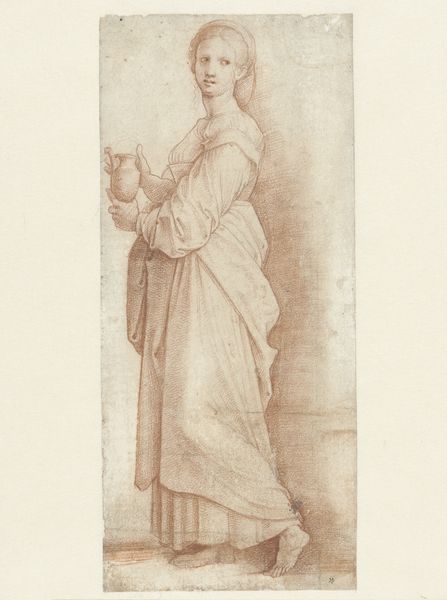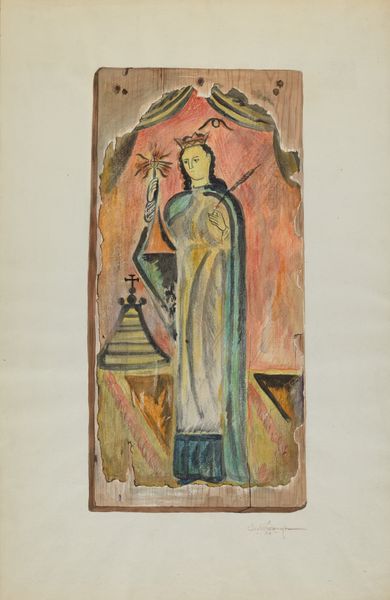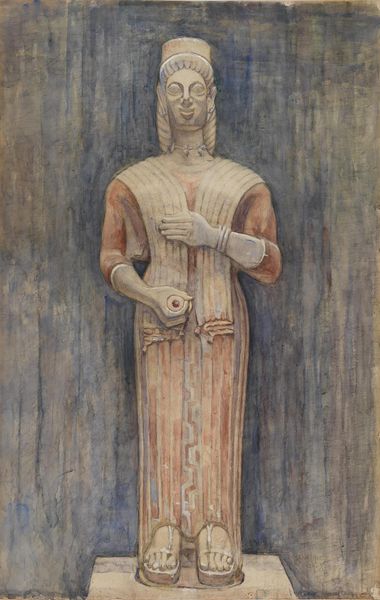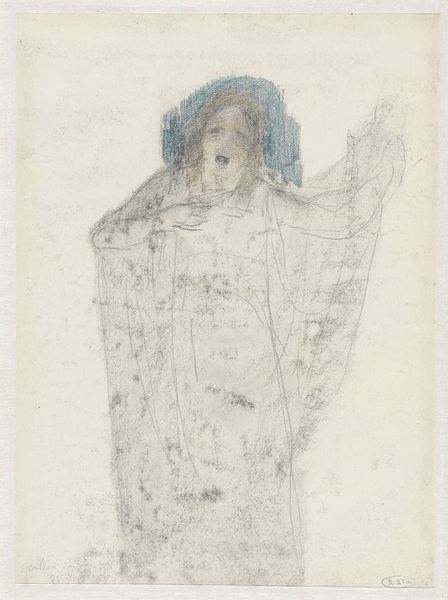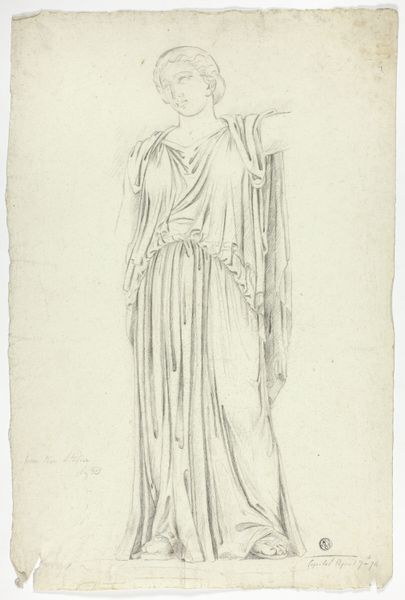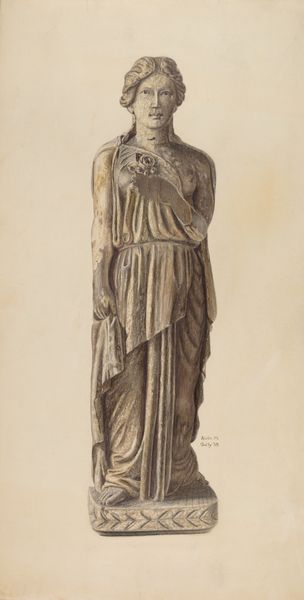
lithograph, print, watercolor
#
portrait
#
lithograph
# print
#
greek-and-roman-art
#
landscape
#
classical-realism
#
figuration
#
watercolor
#
watercolor
Dimensions: 760 mm (height) x 560 mm (width) (bladmål)
Curator: It’s rather melancholic, don't you think? Despite the archaic subject matter, there’s something quite forlorn about it. Editor: That's an interesting first impression! What exactly elicits that emotion in you? Curator: The soft, muted palette combined with the statue's fragmentation. She is clearly missing an arm, there is clear damage and signs of deterioration... It’s suggestive of lost wholeness and time's inevitable decay. The muted colors speak to a sense of the past fading, of things not being as vibrant as they once were. Editor: I see what you mean. Well, this print, titled *Arkaisk græsk Kore (Athen)*, or *Archaic Greek Kore (Athens)*, dates back to 1911 and comes to us from Marie Henriques. It employs a delicate combination of lithograph and watercolor techniques. In that time period, photography had really come into its own; but rather than creating an exact copy, Henriques imbued it with, well, her feeling. As we know from much archeological artwork during that time, it may very well have been done on location, or after, making the degradation seem, from my position, all the more sad. It evokes feelings regarding the sociopolitical position of archeological sites in Greece at that time. Curator: Exactly, it's as if Henriques has managed to capture a fleeting moment in time—the artwork serves almost as a 'memory of a memory', conveying a sentiment beyond just the depicted Kore figure, yet drawing it inward. It reminds us, ultimately, that our own constructs and meanings are never permanent but always evolving with each viewing. Editor: True, she uses a seemingly objective rendering to evoke very subjective responses from us now, a century after its creation. Looking at the work again, it's easy to read a kind of quiet longing or a lament for the classical world into the piece. These artistic and scientific endeavors may indeed evoke deep seated emotion. Curator: A poignant reminder of the cyclical nature of civilization itself, captured in delicate strokes and faded hues. Editor: Absolutely. Thank you for that very astute analysis, drawing our attention to the intersection between representation and its psychological impact!
Comments
No comments
Be the first to comment and join the conversation on the ultimate creative platform.
